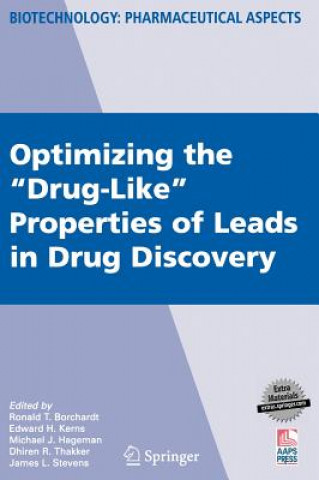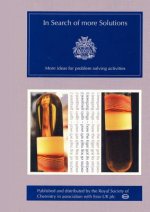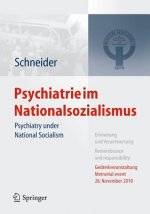
Dostawa
Doradca ds. zakupów
16 127 528 książek w 175 językach







Pokaż wszystkie języki (175)





Jednak się nie przyda? Nic nie szkodzi! U nas możesz zwrócić towar do 30 dni
 Bon prezentowy
O dowolnej wartości
Bon prezentowy
O dowolnej wartości
Bon prezentowy to zawsze dobry pomysł. Obdarowany może za bon prezentowy wybrać cokolwiek z naszej oferty.
Optimizing the "Drug-Like" Properties of Leads in Drug Discovery
 Angielski
Angielski
 603 b
603 b
30 dni na zwrot towaru
Mogłoby Cię także zainteresować


Traditionally, incorporating optimal drug-like properties into a structural lead was not considered by medicinal chemists to be their responsibility. Instead, medicinal chemists felt that the undesirable drug-like properties in their drug candidates would be fixed by preclinical development scientists. However, that view has changed in the past 5 10 years, resulting in another significant paradigm shift in drug discovery. The most significant aspect of this latest paradigm shift is the recognition by medicinal chemists that the drug-like properties of structural hits, structural leads, and drug candidates are intrinsic properties of the molecules and that it is the responsibility of the medicinal chemist to optimize not only the pharmacological properties but also the drug-like properties of these molecules. Therefore, assessment of these drug-like properties is now done early in the drug discovery process on structural hits and structural leads as well as the design of screening libraries. Optimization of these drug-like properties is done through an iterative process in close collaboration with preclinical development scientists. This process is analogous to the process used by the medicinal chemist to characterize and optimize the pharmacological activity of their structural hits, leads and drug candidates.Recognizing these changes in the paradigm by which drugs are discovered, the American Association of Pharmaceutical Scientists (AAPS) has recently organized and sponsored two focused workshops in the area of profiling drug-like properties during drug discovery.The first workshop, entitled "Pharmaceutical Profiling in Drug Discovery for Lead Selection", took place in Whippany, NJ on May 19-21, 2003. This workshop, which was co-sponsored by the American Chemical Society-Medicinal Chemistry Division and the Society for Biomolecular Screening, was focused on prediction, measurement, and utilization of drug-like properties during lead selection. From this workshop arose the book entitled Pharmaceutical Profiling in Drug discovery for Lead Selection, which was edited by Ronald T. Borchardt, Edward H. Kerns, Christopher A. Lipinski, Dhiren R. Thakker and Binghe Wang and published by AAPS Press (Arlington, VA) in 2004.The second workshop entitled "Optimizing the Drug-Like Properties of Leads in Drug Discovery" took place in Parsippany, NJ on September 19-22, 2004. This workshop, which was co-sponsored by the American Chemical Society-Medicinal Chemistry Division, American Chemical Society-North Jersey Section, American Society for Clinical Pharmacology and Therapeutics, European Federation for Pharmaceutical Sciences, International Society for the study of Xenobiotics, and the Society of Toxicology, was focused on the optimization of the drug-like properties of leads in drug discovery. If the strategies and the methodologies presented at this workshop were to be adopted by pharmaceutical and biotechnology companies, it is the belief of the workshop s organizers that more higher quality drug candidates would be advancing into preclinical and clinical development resulting in more efficacious and safer drugs.Traditionally, incorporating optimal drug-like properties into a structural lead was not considered by medicinal chemists to be their responsibility. Instead, medicinal chemists felt that the undesirable drug-like properties in their drug candidates would be fixed by preclinical development scientists. However, that view has changed in the past 5 10 years, resulting in another significant paradigm shift in drug discovery. The most significant aspect of this latest paradigm shift is the recognition by medicinal chemists that the drug-like properties of structural hits, structural leads, and drug candidates are intrinsic properties of the molecules and that it is the responsibility of the medicinal chemist to optimize not only the pharmacological properties but also the drug-like properties of these molecules. Therefore, assessment of these drug-like properties is now done early in the drug discovery process on structural hits and structural leads as well as the design of screening libraries. Optimization of these drug-like properties is done through an iterative process in close collaboration with preclinical development scientists. This process is analogous to the process used by the medicinal chemist to characterize and optimize the pharmacological activity of their structural hits, leads and drug candidates.§Recognizing these changes in the paradigm by which drugs are discovered, the American Association of Pharmaceutical Scientists (AAPS) has recently organized and sponsored two focused workshops in the area of profiling drug-like properties during drug discovery. §The first workshop, entitled "Pharmaceutical Profiling in Drug Discovery for Lead Selection", took place in Whippany, NJ on May 19-21, 2003. This workshop, which was co-sponsored by the American Chemical Society-Medicinal Chemistry Division and the Society for Biomolecular Screening, was focused on prediction, measurement, and utilization of drug-like properties during lead selection. From this workshop arose the book entitled Pharmaceutical Profiling in Drug discovery for Lead Selection, which was edited by Ronald T. Borchardt, Edward H. Kerns, Christopher A. Lipinski, Dhiren R. Thakker and Binghe Wang and published by AAPS Press (Arlington, VA) in 2004. §The second workshop entitled "Optimizing the Drug-Like Properties of Leads in Drug Discovery" took place in Parsippany, NJ on September 19-22, 2004. This workshop, which was co-sponsored by the American Chemical Society-Medicinal Chemistry Division, American Chemical Society-North Jersey Section, American Society for Clinical Pharmacology and Therapeutics, European Federation for Pharmaceutical Sciences, International Society for the study of Xenobiotics, and the Society of Toxicology, was focused on the optimization of the drug-like properties of leads in drug discovery. If the strategies and the methodologies presented at this workshop were to be adopted by pharmaceutical and biotechnology companies, it is the belief of the workshop s organizers that more higher quality drug candidates would be advancing into preclinical and clinical development resulting in more efficacious and safer drugs.
Informacje o książce
 Angielski
Angielski




 Jak kupować
Jak kupować














